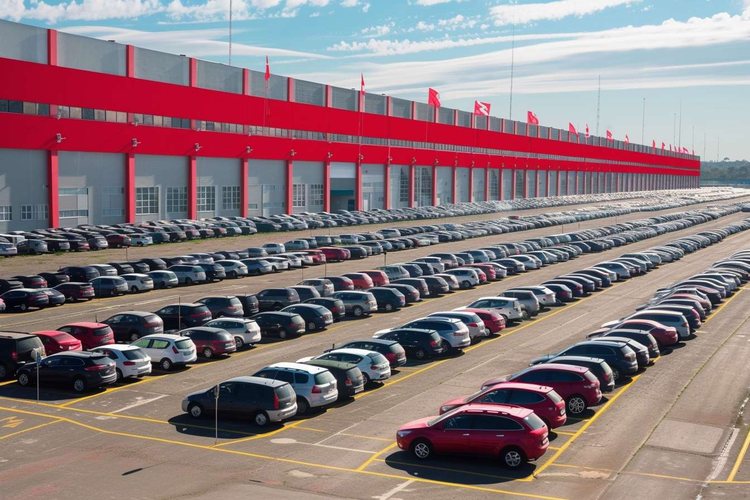Hyperlocal Supply Networks: Redefining Business Proximity
The concept of hyperlocal supply networks is gaining traction in the business world, reshaping how companies approach sourcing, production, and distribution. This innovative strategy focuses on leveraging local resources and partnerships to create highly efficient, responsive, and sustainable supply chains that operate within a limited geographical area.

The Rise of Hyperlocal Supply Networks
Hyperlocal supply networks represent a significant shift from globalized supply chains to more localized, community-centric models. This transition is driven by several factors, including increasing consumer demand for locally-sourced products, rising transportation costs, and growing awareness of the environmental impact of long-distance shipping.
The concept builds upon the principles of just-in-time manufacturing and lean production, but takes them a step further by emphasizing ultra-short supply chains. In a hyperlocal model, businesses source materials, manufacture products, and distribute goods within a radius of typically less than 50 miles, sometimes even within a single neighborhood or city block.
Key Components of Hyperlocal Supply Networks
Implementing a hyperlocal supply network requires a fundamental reimagining of business operations. The key components of this model include:
-
Local Sourcing: Prioritizing suppliers within the immediate vicinity, often working directly with small-scale producers and artisans.
-
Micro-Manufacturing: Establishing small, flexible production facilities that can quickly adapt to local demand and market changes.
-
Community Integration: Engaging with local communities to understand their needs and preferences, and involving them in the production process when possible.
-
Digital Connectivity: Utilizing advanced technologies to coordinate between local suppliers, manufacturers, and distributors in real-time.
-
Sustainable Practices: Implementing environmentally-friendly processes that minimize waste and reduce the carbon footprint of operations.
Benefits and Challenges of Hyperlocal Supply Networks
The adoption of hyperlocal supply networks offers numerous advantages for businesses, local communities, and the environment. However, it also presents unique challenges that must be carefully navigated.
Benefits include reduced transportation costs, increased supply chain visibility, improved product freshness and quality, enhanced community relationships, and greater resilience to global disruptions. Additionally, hyperlocal networks can lead to faster product development cycles and more personalized offerings tailored to local preferences.
Challenges, on the other hand, include potential limitations in scale and variety of products, the need for significant initial investment in local infrastructure, and the complexity of managing multiple small-scale operations instead of a centralized system.
Case Studies: Successful Implementations
Several companies have successfully implemented hyperlocal supply networks, demonstrating the viability and potential of this approach across various industries.
One notable example is a urban farming initiative in Detroit that partners with local restaurants to provide ultra-fresh produce grown within city limits. By utilizing vertical farming techniques and advanced hydroponics, the company can supply a variety of herbs and vegetables to nearby eateries within hours of harvest, reducing food waste and transportation costs while ensuring peak freshness.
Another case study involves a custom furniture manufacturer in Portland, Oregon, that sources all its wood from local, sustainably managed forests and works exclusively with artisans within a 30-mile radius. This hyperlocal approach has not only reduced the company’s environmental impact but has also created a unique selling proposition that resonates with environmentally conscious consumers.
Future Prospects and Implications
As technology continues to advance and consumer preferences evolve, hyperlocal supply networks are poised to play an increasingly significant role in shaping the future of business operations. The integration of emerging technologies such as 3D printing, autonomous vehicles, and artificial intelligence could further enhance the efficiency and scalability of hyperlocal models.
Moreover, the growing emphasis on sustainability and community engagement in business practices suggests that hyperlocal supply networks may become a key differentiator for companies seeking to build strong brand loyalty and maintain a competitive edge in increasingly crowded markets.
Actionable Strategies for Implementing Hyperlocal Supply Networks
• Conduct a comprehensive local resource assessment to identify potential suppliers and partners within your immediate area.
• Invest in flexible, small-scale manufacturing equipment that can be easily adapted to changing local demands.
• Develop strong relationships with local community leaders and organizations to gain insights into local needs and preferences.
• Implement advanced inventory management systems to optimize stock levels and minimize waste in a hyperlocal context.
• Consider creating educational programs or workshops to train local workforce in specialized skills required for your operations.
In conclusion, hyperlocal supply networks represent a paradigm shift in how businesses approach their operations and interact with their immediate communities. By prioritizing proximity, sustainability, and local engagement, companies can create more resilient, efficient, and socially responsible supply chains. As this model continues to evolve and mature, it has the potential to reshape industries and redefine the relationship between businesses and the communities they serve.





